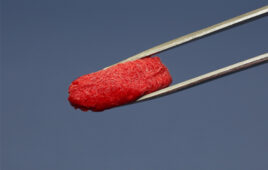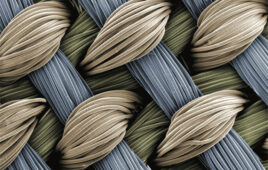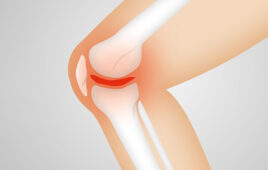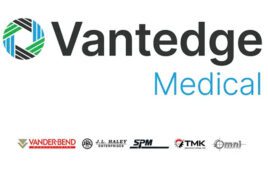A joint team from Kessler Foundation and the New Jersey Institute of Technology (NJIT) is developing new applications for wearable robotic exoskeleton devices with a $5 million federal grant from the National Institute on Disability, Independent Living and Rehabilitation Research. (NIDILRR #90RE5021-01-00).
Researchers from the two institutions are working together on the next generation of robotic exoskeletons to improve mobility and to enable safer, more independent functioning for people with spinal cord injuries (SCI), Duchenne Muscular Dystrophy, and stroke. The team will also evaluate the efficacy of existing robots for restoring and expanding mobility to upper and lower extremities.
The grant, “Rehabilitation Engineering Research Center (RERC) on Wearable Robots,” funds five projects–two research projects led by Kessler Foundation ($2M) and two developmental initiatives and a research study led by NJIT ($3M). The two institutions will consult on each other’s projects, with NJIT contributing engineering expertise and upper extremity robotic research to Kessler Foundation and Kessler Foundation providing NJIT with its deep knowledge of existing commercial devices and experience working with diverse populations with disabilities.
“This grant allows us to pursue a comprehensive effort that includes advanced robotic engineering from NJIT and outstanding biomechanics and neuromuscular physiology research from Kessler Foundation, with critical feedback throughout the development process from the people who use these devices. The benefits of working with the Foundation’s researchers are enormous and offer the promise of improving the technology and services to individuals with disabilities,” said Richard Foulds, Ph.D., associate professor of Biomedical Engineering at NJIT and principal investigator (PI) for the grant. “The interaction of investigators from Kessler Foundation and NJIT and with users with disabilities across projects is genuinely distinctive.”
“This exciting collaboration advances our shared mission to improve mobility, independence and quality of life for individuals with spinal cord injury and stroke,” said Guang Yue, Ph.D., director of Human Performance and Engineering Research at Kessler Foundation and a co-PI for the grant. “Robotic exoskeletons are rapidly changing our traditional approach to rehabilitation. Now, we are optimizing ways to use the robots so that people with diverse mobility deficits including limited upper body strength, can benefit. Results from these RERC studies will support expanded use of robotic exoskeletons at home and in the community.”
At Kessler Foundation, Gail Forrest, Ph.D., associate director of Human Performance and Engineering Research, is combining exoskeletal-assisted walking with external electrical stimulation of the spinal cord toward potentially promoting voluntary muscle firing and independent walking. Neuroimaging of the spinal cord will be used to assess how the combination therapy can strengthen connectivity of the pathway between the brain and injured spinal cord and how the improved connectivity explains gains in walking and balance function. Participants will be scanned at the Rocco Ortenzio Neuroimaging Center at Kessler Foundation to analyze changes in spinal cord connectivity after the treatment.
Karen Nolan, Ph.D., senior research scientist at Kessler Foundation, is extending her preliminary research on the use of the Ekso GT, a robotic exoskeleton, in inpatients with motor deficits caused by acute stroke. The study focuses on the acute phase of rehabilitation of inpatients and outpatients whose deficits hinder their ability to participate in conventional physical therapy for standing and walking. Dr. Nolan is examining the impact of walking in the exoskeleton on gait function, balance, and neuromuscular responses, as well as community participation and overall quality of life.
Sergei Adamovich, Ph.D., associate professor of Biomedical Engineering at NJIT and a co-PI for the grant, leads a project involving Kessler Foundation researchers, faculty from the Rutgers Department of Rehabilitation and Movement Sciences and NJIT graduate students to extend their earlier work linking robotic exoskeletons with virtual reality platforms to improve neurorehabilitation therapy for people with limited arm movement due to a stroke. This work will examine the benefits of simultaneous arm and hand therapy in accelerating improvement in function. Additionally, a new upper extremity exoskeleton combined with virtual reality will be developed that can be used in the home setting.
Professor Foulds will lead the development of two new exoskeletons. One of these seeks to enhance real-world, robot-assisted walking for people with SCI. Key to this work is a new approach that allows the user to voluntarily control the exoskeleton movements to yield more natural, intuitive and flexible ambulation by basing stride – the length and height of steps – on movement intention signaled by hands and fingers. The second project will employ the same novel user-control strategy to support arm function in individuals with Duchenne Muscular Dystrophy who have experienced a dramatic loss of range in movement. This new exoskeleton will provide anti-gravity support and counter friction to allow arm movements to be made with low levels of remaining muscle strength.
This collaborative research will also be supported by education and training activities for therapists, physicians and doctoral researchers – the designers of future therapeutic devices – as well as by dissemination of the broader rehabilitation benefits of commercial and experimental wearable robots.




